Ethnobotany of the
Big Bear Lake area, California
Part 1
|
| This work is not meant to be an identification guide (there are many
out there), but a resource for some of the useful characteristics
inherent in the local flora. Ascertaining the effectiveness of
ethnobotanicals is complicated and subjective. This body of work is by
no means exhaustive or definitive and is comprised of my experiences
(any edible or medicinal feature that I have not tried myself is
italicized) in conjunction with information found at
www.pfaf.org and
herb.umd.umich.edu. As with
anything else you are not familiar with - study before applying! |
| |
Abies concolor - White Fir
The needles add a pleasant tartness to hot or cold water. A hot tea (try
to not boil foliage—volatile essential oils can be lost) can be cooled
and applied
to sore muscles. The antiseptic pitch can be applied to small cuts.
Ground-up bark tans buckskin. |
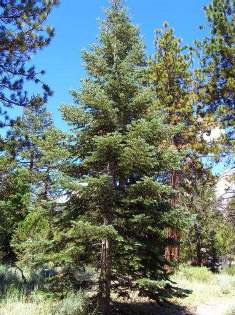 |
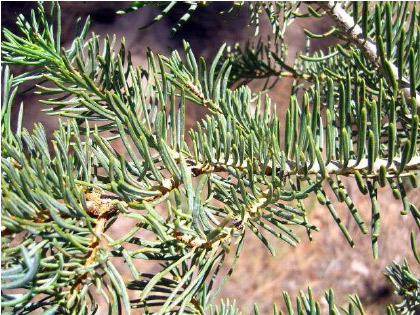 |
| |
|
|
| |
Achillea millefolium - Yarrow
Leaves and flowers are edible raw or cooked (cooking removes some of the
strong taste). The flowers and leaves make a bitter-mint tea. Apply a
poultice of leaves to burns and inflammations (leaves contain azulene,
an anti-inflammatory agent). Directly-applied fresh leaves are quite
effective in stopping bleeding and alleviating painful teeth. Burn the
dried plant (a piercing smell) to repel mosquitoes. A pink
variety—flowers are usually white. |
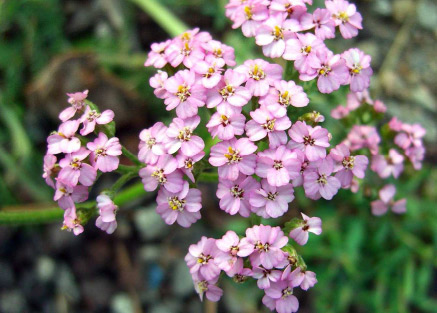 |
| |
Ambrosia acanthicarpa - Sand Bur
The ground-up root is applied to toothaches. |
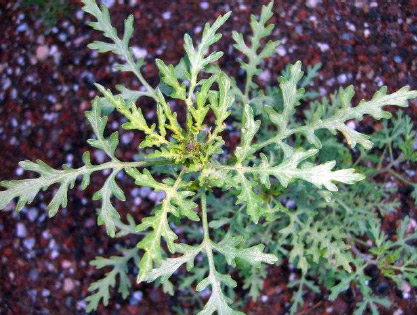 |
| |
Amelanchier utahensis - Utah Serviceberry
The fruit, rich in iron and copper, is delicious raw and cooked. The
wood is dense and strong—good for tool handles, bows/arrowshafts, and
other implements. |
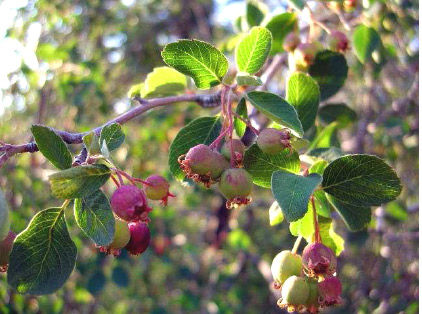 |
| |
Antennaria rosea - Pussytoes
The leaves can be chewed for a refreshing flavor (and offers a unique,
squeaky sensation in the mouth) or added to a smoking mixture (sweet
smelling and smooth). |
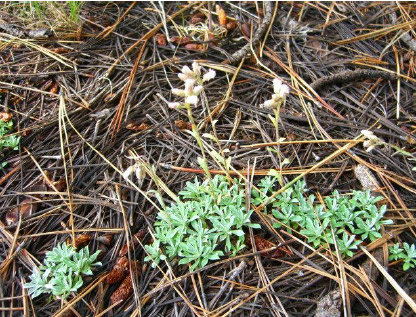 |
| |
Arctostaphylos patula ssp platyphylla - Greenleaf
Manzanita
Fruits are edible, sweeter when dried. I collected some old, dried
berries in Coloma, CA that tasted as though they were filled with brown
sugar crystals!
You can grind the dried fruits, seed and all, and add the powder to
breads and soups. The leaves (astringent) can be used in a poultice for
burns and
cuts. Chewed, the leaves tighten the gums (with a flavor that’s 10%
green apple, 90% bitter). They are also used in smoking mixtures (livens
up a bland
blend). |
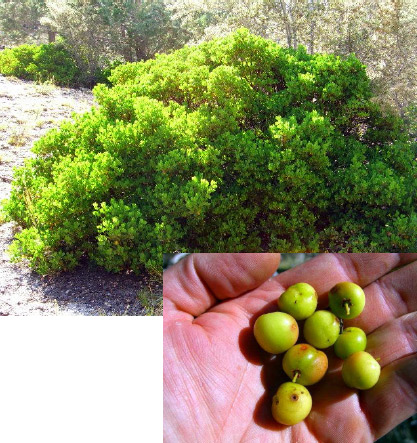 |
| |
Argemone munita - Prickly Poppy
Seeds, roasted and crushed, can be applied to burns for pain relief and
healing. |
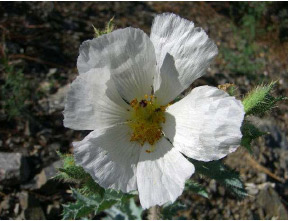 |
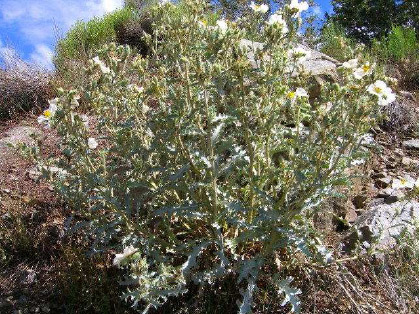 |
| |
Artemisia dracunculus - Tarragon
Although I haven’t been able to appreciate the odor or taste, leaves are
edible raw and can be dried and ground-up for use as a spice. The plant
repels insects. |
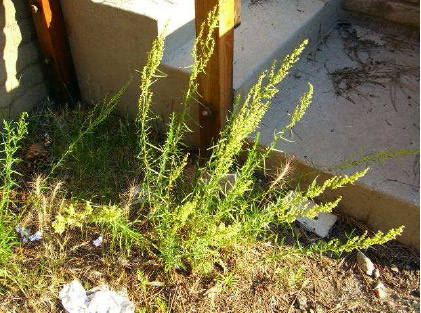 |
| |
Artemisia ludoviciana - Mugwort
Leaves and flowers make a good spice: dried, they make a great incense.
Most of the fragrant Artemisias have antibiotic properties that are
effective in washes, teas and smoke (incense, moxibustion). A tea from
the leaves calms upset stomachs. This plant is burned to repel
mosquitoes. |
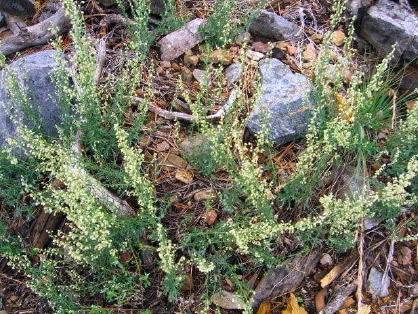 |
| |
Artemisia tridentata - Great Basin Sagebrush
Dried and crushed, the leaves make a powerful incense, with the same
properties as listed with Mugwort above. The leaves can be chewed to
relieve a sore throat. A cold tea from the leaves serves as an
antiseptic wash. |
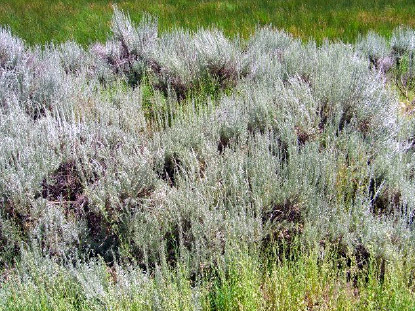 |
| |
Castilleja applegatei - Paintbrush
A tea made from the entire plants can be employed as a purgative (to
vomit). |
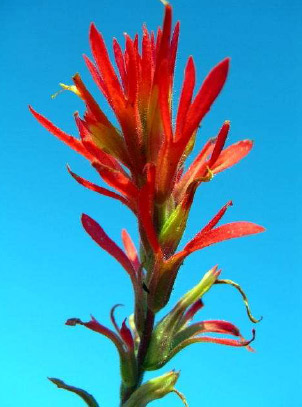 |
| |
Cercocarpus ledifolius var. intermontanus - Curl-Leaf
Mountain Mahogany
The bark makes a slightly astringent, orangecolored tea that combats
excessive phlem. The wood is an excellent fuel. The green wood, dried
and powdered, can be applied to burns in a poultice to hasten healing. |
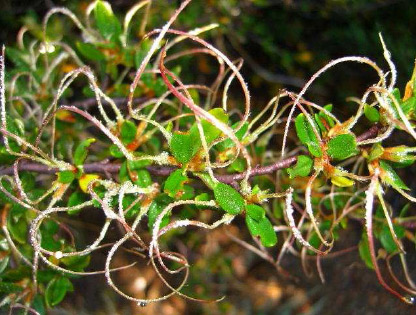 |
| |
Chenopodium spp. - Goosefoot
The whole above-ground portion of this plant is edible. When cooked, to
differentiate the taste from spinach becomes a challenge! The seed can
be roasted (an extremely satisfying, nutty taste!) and added to bread or
eaten by itself. The leaves are rich in calcium, Vitamin A and protein. |
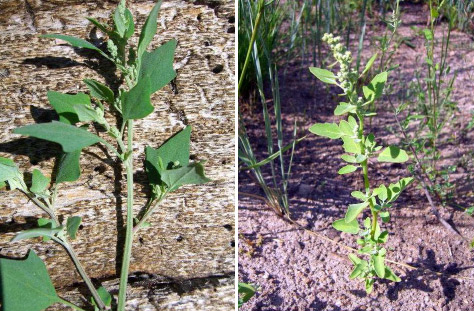 |
| |
Chrysothamnus viscidiflorus - Green Rabbitbrush
Although I find the taste disagreeable, and the smell reminds me of
pickles, folks use the leaves and soft stems as a spice and in a weak
tea to soothe coughs. Use with caution—a strong tea can make a person
vomit. I quantify a weak tea as being comprised of enough foliage to
cover the palm of your hand in one quart of water. Incidentally, the
roots contain a latex that can be used to make rubber. The Paiutes used
the older stems to pierce earlobes. |
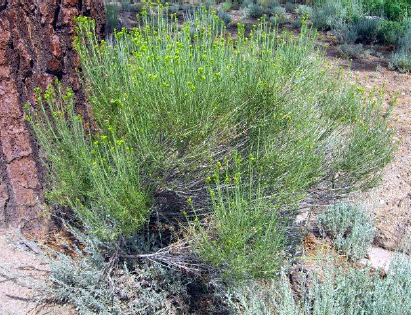 |
| |
Cirsium scariosum - Stemless Thistle
Roots are edible raw and cooked. They are relatively nice-tasting (it’s
a treat to find bland edibles in the wild when faced with so many strong
tastes out there). |
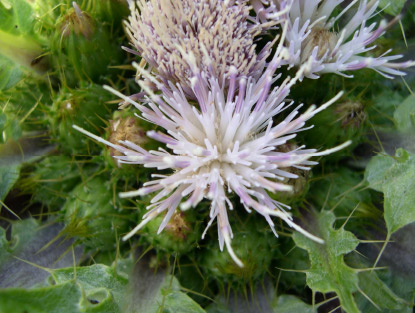 |
| |
Conyza canadensis - Horseweed
The stem makes an excellent hand drill spindle. Young leaves are edible
when cooked. A tea from the leaves (astringent) is consumed for diarrhea
(I tried this twice—it seemed to work). |
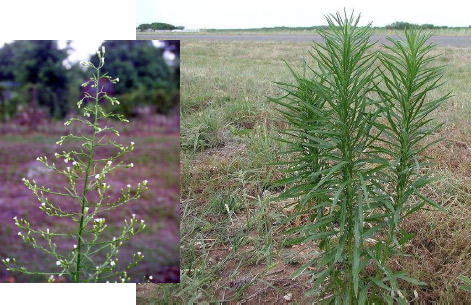 |
| |
Descurainia sophia - Tansy Mustard
The plant and seeds are edible raw and cooked. |
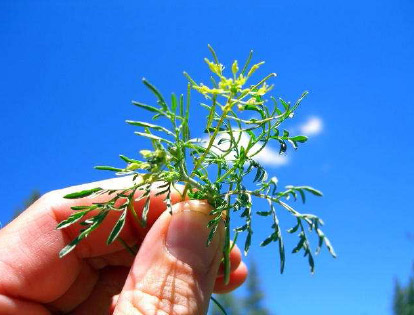 |
| |



